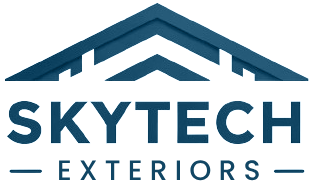What Payment Plans Are Available for Roof Replacement?
Replacing a roof is a substantial financial investment, and
many homeowners find themselves seeking flexible payment options to manage the
cost effectively. As you finalize your decision during the purchase stage,
understanding the available payment plans can help you make a well-informed
choice that fits your budget. This guide will explore various payment plans for
roof replacement, with a focus on affordable roofing solutions and local
roofers.
1. Understanding the Cost of Roof Replacement
Before delving into payment plans, it’s important to have a
clear understanding of roof replacement costs. On average, roof replacement in
the U.S. ranges between $7,000 and $12,000, depending on factors like the size
of the roof, the type of materials used, and labor costs. For example, asphalt
shingles are typically more affordable than metal roofing or tile.
2. Common Payment Plans Offered by Roofing Contractors
Many roofing companies offer a variety of payment plans to
accommodate different financial situations. Here’s a look at the most common
options:
Installment Payments: Some contractors allow homeowners to
pay in installments rather than a lump sum. This can help spread the cost over
several months or even years. For instance, if you choose an affordable roofing
company, they might offer a payment plan where you make a 20% down payment and
then pay the remaining balance in monthly installments.
Deferred Payments: With deferred payment plans, you can
start paying for your new roof after the installation is complete. This option
can be particularly appealing if you need time to adjust your budget or secure
financing.
Financing Options: Many roofing companies near me partner
with financing institutions to offer various loan options. These can include
personal loans, home equity lines of credit (HELOCs), or even specialized home
improvement loans. Interest rates and terms will vary depending on your credit
score and the lender.
Statistical Insight: According to a survey by the National
Roofing Contractors Association (NRCA), nearly 40% of homeowners use financing
options to cover the cost of roof replacement.
3. Financing Through Credit Cards
Using a credit card for roof replacement is another viable
option, though it’s important to consider the interest rates associated with
this method. Many homeowners use credit cards to manage their expenses due to
the flexibility they offer.
Pros: Credit cards provide immediate access to funds and can
be useful for covering upfront costs. Some cards also offer rewards or cashback
on purchases.
Cons: High-interest rates on credit cards can lead to
significant additional costs if the balance isn’t paid off quickly. It’s
crucial to be aware of your card’s terms and rates.
4. Home Equity Loans and HELOCs
Home equity loans and home equity lines of credit (HELOCs)
are popular options for financing roof replacements, especially if you have
substantial equity in your home.
Home Equity Loan: This is a lump-sum loan with a fixed
interest rate and repayment term. You’ll make regular payments over the life of
the loan. This option can be beneficial for larger projects where you need a
substantial amount of money.
HELOC: A HELOC works like a credit card, allowing you to
borrow against the equity in your home up to a certain limit. You can draw on
this line of credit as needed and only pay interest on the amount you borrow.
It offers flexibility but can come with variable interest rates.
Statistical Insight: According to Bankrate, homeowners who
use a home equity loan or HELOC for home improvements often benefit from lower
interest rates compared to credit cards or personal loans.
5. Government and Utility Rebates
In some cases, you may be eligible for government or utility
company rebates and incentives that can help offset the cost of a roof
replacement. These programs vary by location and may include:
Energy Efficiency Rebates: If you’re installing
energy-efficient roofing materials, you might qualify for rebates or
incentives. For example, some states offer rebates for installing cool roofs or
reflective materials that reduce energy consumption.
Local Incentives: Check with your local government or
utility providers for any available programs. They may offer incentives or
financing options for home improvements that enhance energy efficiency.
Statistical Insight: The U.S. Department of Energy reports
that energy-efficient home improvements can lead to significant long-term
savings on energy bills, potentially justifying the investment.
6. Negotiating Payment Terms with Your Contractor
When working with local roofing companies or residential
roofing contractors, you can often negotiate payment terms. Here’s how to
approach this:
Discuss Options Early: When discussing your roof
replacement, ask about available payment plans and financing options upfront.
This will help you understand what’s available and tailor the plan to your
needs.
Negotiate for Flexibility: If the contractor has
flexibility, negotiate terms that work best for you. For instance, you might
ask for a lower down payment or more extended repayment period.
Check for Discounts: Some contractors offer discounts for
upfront payments or full cash payments. Inquire about these options to
potentially save on overall costs.
Statistical Insight: The Better Business Bureau (BBB) found
that homeowners who negotiate payment terms directly with contractors often
achieve more favorable terms and conditions.
7. Finalizing Your Decision
As you approach the final stages of your decision-making
process, ensure that you have a clear understanding of your payment plan and
financing options. Here’s a checklist to help you finalize:
Review Terms and Conditions: Carefully review all terms and
conditions associated with your payment plan or financing option. Ensure there
are no hidden fees or unfavorable terms.
Verify Contractor Credentials: Confirm that your chosen
contractor is reputable and has good standing. Check references and online
reviews.
Ensure Clear Communication: Communicate clearly with your
contractor about payment schedules, due dates, and any other relevant details.
This will help avoid misunderstandings and ensure a smooth process.
Statistical Insight: According to a report by the National
Association of Home Builders (NAHB), clear communication and detailed
agreements can lead to higher satisfaction with home improvement projects.
Understanding and selecting the right payment plan for your
roof replacement can significantly impact your financial well-being and project
satisfaction. From installment payments and financing options to exploring
government rebates and negotiating with contractors, there are various ways to
manage the cost of your new roof. Consider working with affordable roofers near
me or local roofing companies to find flexible and cost-effective solutions. By
researching your options and communicating effectively, you can secure a
payment plan that meets your needs and ensures a successful roof replacement
project.


